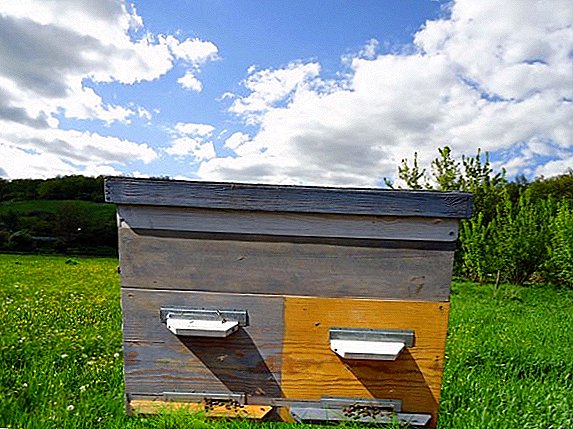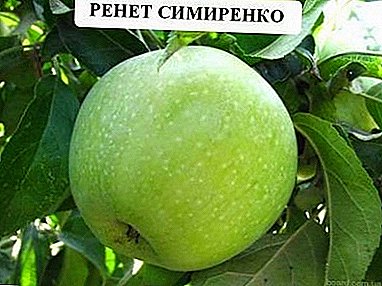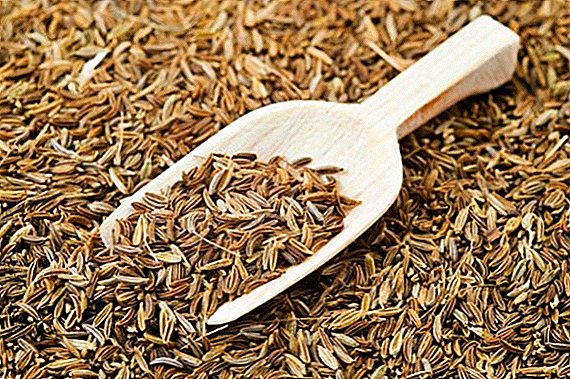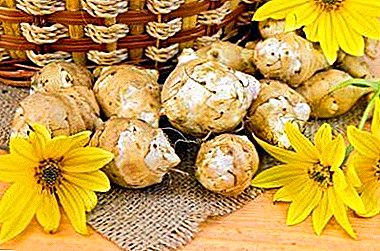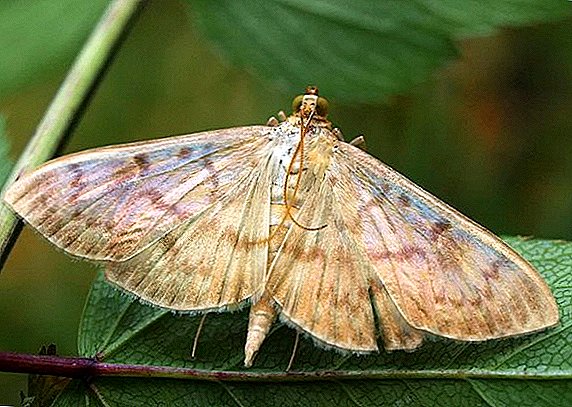 In nature, everything is surprisingly interconnected. Even seemingly useless species can be useful (for example, during treatment). You will learn about one of these examples from this review. Consider the usefulness of the wax moth, also known as ognevka, and what is its use for medical purposes.
In nature, everything is surprisingly interconnected. Even seemingly useless species can be useful (for example, during treatment). You will learn about one of these examples from this review. Consider the usefulness of the wax moth, also known as ognevka, and what is its use for medical purposes.
Medicinal properties of preparations based on wax moth larvae
Among beekeepers such insects have a well-deserved reputation for parasites. Gray-looking moths make their way into the hives and lay eggs, and after a few days, the larvae appear from them. They feed exclusively on "bee" products, preferring wax.

On the one hand, this is a clear loss for the apiary. But it is the “diet” that makes these larvae a valuable medical raw material. Once in alcohol, the mole fills it with a whole range of useful substances and compounds. Among them:
- Cerrase - the main active ingredient that can neutralize pathogenic cells;
- nucleotides and peptides;
- alkaline protease;
- amino acids and bioflavanoids;
- folic acid;
- basic trace elements;
- vitamins A, B, C, E, PP.
Important! In the post-infarction period, the agent begins to be applied no earlier than 10 days after the crisis.With such a composition, the extract, made on the basis of bee sting, shows the following healing properties:
- "tames" coronary heart disease;
- normalizes the work of the heart muscle and myocardium;
- lowers blood pressure;
- "regulates" the degree of blood coagulation;
- increases hemoglobin;
- removes bronchospasms;
- helps with disorders of the nervous system;
- strengthens the immune system;
- promotes the rapid "healing" of scars and scars.
To help strengthen the immune system: pumpkin, lacunos, chokeberry, dill, bergamot, chives, garlic, cornel, gooseberry, calendula.It is not surprising that insects with such a "track record" are widely used in the manufacture of various drugs and in the fight against various diseases.

Where used in medicine
Bee nebulus in the form of tincture is often featured in a prescription or prescription given by a doctor for further treatment. She helps people suffering from:
- Cardiovascular "failures". The drug prevents atherosclerosis, and with regular (within 2-3 months) admission even smoothes postinfarction scars, stimulating the growth of muscle tissue in the damaged area.
- Varicosa. Due to its composition, the tool reduces the risk of blood clots, improving microcirculation of blood and nutrients. In this regard, the fortifying and antioxidant effect of the tincture is also valuable.
- Asthma, chronic bronchitis and other broncho-pulmonary diseases. Mucolytic and bronchodilator effects have long been used to combat such complications. Phthisiatricians know that long-term use of the tincture in the form of a 20% solution helps to win even tuberculosis.
- Gastric and duodenal ulcers. This reduces the risk of keloid scars on the affected wall.
- All sorts of parasites. The most "sworn" opponent ognevki is Giardia, settling in the intestinal tract and mucous membranes of man.
- Nervous System Disorders and Depression. Even a small dose normalizes the state of the psyche in permanent stress and heals sleep.
- Toxicosis and menopausal disorders. The composition gently acts on the endometrial layer, restoring its cells.
- Sexual dysfunction in men. Drugs based on these larvae stimulate the production of testosterone, returning male power. Also, they do not allow prostate to develop.
The use of hellebore, oregano, chervil, peony, rocamball, sucker, amaranth, goji berries, radishes, melons, hawthorn has a positive effect on the cardiovascular system.
Important! Fighting the signs of tuberculosis by taking this medicine can take 4-6 months. It depends on the stage of the dangerous disease and the doses recommended by the phthisiatrician.In addition to the "course" treatment, blanks from this material are used for prophylaxis and as a reducing agent (the protease enzyme, as it were, "stitches" damaged tissues). Athletes also often resort to their help when they need to recover from peak loads.
How to cook
The collected larvae are highly "quoted" in traditional medicine. Most often they are used to make popular tinctures on alcohol and ointments. We find out how to make such a medicine with your own hands.
Honey, royal jelly, bee venom, perga, zabrus, wax and propolis are referred to the healing products of beekeeping.
Alcohol tincture
The recipe is quite simple:
- To begin, prepare the larvae. They must be growing, but not growing to the state of "pupa". Take them directly from the hive, trying to immediately put into the business. No additional processing is required.
- Then fold the mole in a dark glass dish and fill with 70 ° alcohol. The proportion is simple - 1:10 (that is, 150 g of strong liquid will go to 15 g of larvae).
- Mixture insist 2 weeks, not forgetting to shake every day. After this period, the composition is ready, it remains to strain it and put in a cool place. Shelf life - 1 year.
Did you know? Use the healing "talents" of insects began in ancient Egypt. A little later, the Chinese healers advised their patients ... eating flames alive.For the treatment of advanced diseases of the respiratory tract make a 20% drug. The scheme is the same, only the larvae on the same amount of alcohol will need twice as much.
Ointment
Here is a little more complicated - other components are used. Let's start:
- Usually take 50 g of "young" parasites and pour alcohol. It needs a bit - to barely cover the larvae.
- To base properly soaked, let it brew for 5 days.
- Then add 200 g of Hypericum oil and calendula. Over mix.
- Then in the course are beeswax with propolis in equal shares (50 g).
- We warm up the resulting "mix" in the so-called water bath for a little longer than 2 hours.
- Cool, decant - and you're done!
Important! Making a water bath is very easy: you need two pots. In a large, filled with water and heated on the burner, a smaller container is inserted, already with the blank. For such purposes, it is better to take enameled dishes, preserving useful substances.As you can see, everything is simple, to collect all the necessary "elements" of the recipe is also easy. And then the question arises: how to take such formulations to get the maximum benefit from them?

How to use
Immediately make a reservation that such funds can not be taken "by eye". Yes, and consult with your doctor is very desirable - experts will determine a safe dose and frequency of admission. They will differ depending on the type of product obtained.
Alcohol tincture
Bee moth as a component of dark tincture implies an internal method of application, and numerous reviews indicate the need for its proper reception.
Dose calculated based on weight. Some give children a drop, based on the principle of "a drop for a year." This conventional method is not very correct - the body of young patients with this approach receives a "shock" amount of various compounds and acids. The “1 drop / 12 kg” scheme looks more secure.
Important! The transition to the "adult" dosage is carried out only upon reaching the age of 14.Adults already take 2-3 drops per 10 kg (in case of tuberculosis and "oncology" this rate reaches 4-5). Take the infusion half an hour before meals, be sure to dilute it with water (enough ¼ cup). If children are repelled by a sharp alcohol smell, you can add some water, but not more than half a glass.

For the best effect, the healing infusion should be held in the mouth for 1-2 minutes, or put under the tongue. Reception begins gradually - on the first day it will be enough 1 time and a quarter of the recommended dose. The next day, you can take half. If the body normally takes this medicine, be patient for another couple of days (75% each and full dose) - and you can switch to 2 times a day.
Before dinner, tinctures are not taken - they greatly increase the tone, which is undesirable for children, old people and active adults. Consider the moment that the 20% of the composition will need half as much as a weaker solution of 10%.
Did you know? I. I. Mechnikov was the first among scientists to study the process of feeding the wax moth. The result was sensational for that time (and this is the end of the nineteenth century): then tuberculosis was considered incurable, and the ability of a butterfly to kill Koch’s wand seemed to many almost a miracle.The course of treatment is calculated by doctors and can take from 1 to 3 months. Prophylactic administration is 3 weeks with the same interval between approaches (but only 1 time per day).

Ointment
The use of ointment does not imply accurate dose calculations, but there are some nuances here. For example, the mucous membranes are very sensitive to alcohol, so before applying the composition is diluted with water. In order not to harm yourself, the resulting material is used as follows:
- The "rattled" ulcer can be calmed by taking a third of a teaspoonful up to 25-30 minutes before meals (twice a day).
- Fibrioma is also treated by the "internal" way, diluting 10 drops in water (they drink it three times a day).
- For the treatment of otitis media, the ear is lubricated or the cotton bundles soaked in a bitterness are inserted into it, which are replaced 3 times a day.
- Unpleasant sinusitis will recede if you drip a tablespoon of melted ointment into your nose.
Did you know? The biological family of moles under this name unites more than 6,000 species of insects. We are accustomed to their nondescript mind, and in the tropics there are specimens of 8.5 cm in length, with a spectacular and bright color.
Contraindications
The wax moth, which is also a moth, helps many people in the treatment, but one should not forget that the "treated" larvae can also cause harm. 
They refuse from taking if there are direct contraindications, such as:
- allergic reaction to wax or alcohol;
- intolerance to any of the components of this composition;
- pregnancy (the exception may be only the recommendation of the doctor, and then with the lowest possible dosage);
- lactation period;
- exacerbation of pancreatitis, ulcers or gastritis;
- small age (2 years and less); in some cases, this “taboo” is extended to 10–12 years;
- taking potent drugs.
Now you know how a gray parasite from an apiary can be useful. We hope this information will help improve health and prevent the development of many ailments. Good state of health!


